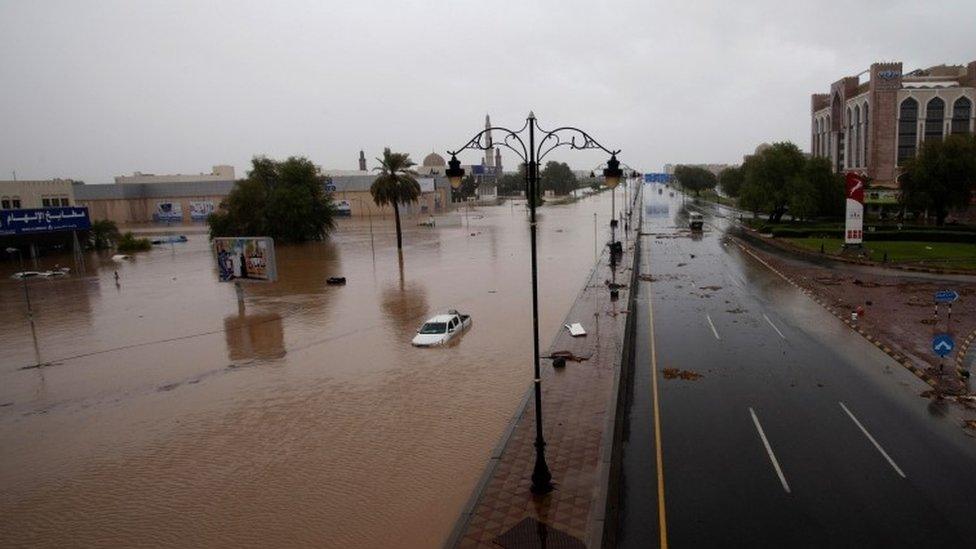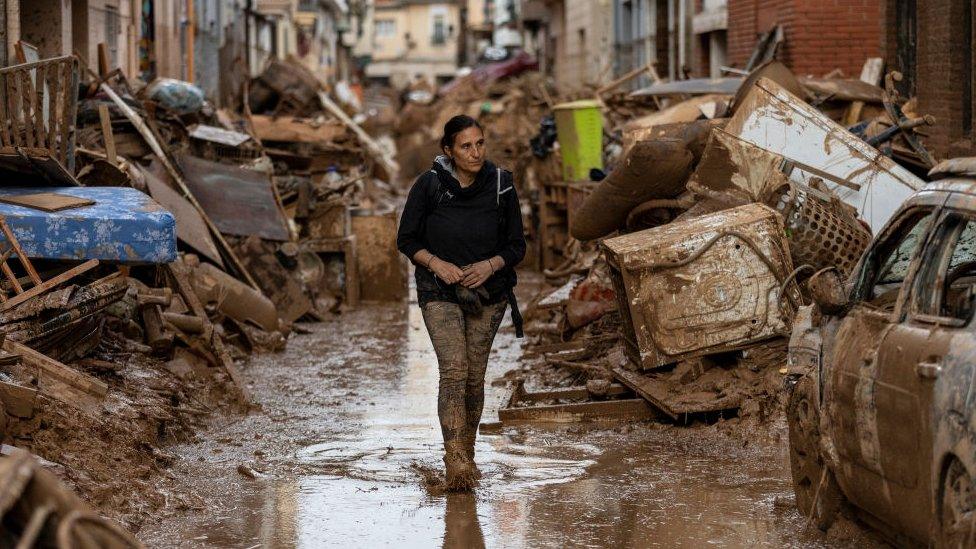Shaheen: Tropical cyclone batters Oman and Iran, killing 13
- Published

Thousands were evacuated from coastal areas in Oman
At least 13 people have been killed after tropical cyclone Shaheen battered parts of Oman and Iran.
There was widespread flooding along Oman's northern coast as the storm made landfall on Sunday, bringing heavy rain and winds of up to 150km/h (93 mph).
Omani authorities reported the deaths of seven people in North al-Batinah province on Monday. Four others drowned or were killed in landslides on Sunday.
In Iran, state media said the bodies of two fishermen had been found.
Three other fishermen remain missing off the coast of the south-eastern province of Sistan-Baluchestan, near the border with Pakistan. Iran's deputy parliamentary speaker initially said that six people were killed.
Infrastructure, including electrical facilities and roads, was also damaged.
Parts of the United Arab Emirates were placed on standby as the storm moved south-westwards over land on Monday and weakened, external. Residents of al-Ain were told to avoid leaving home except for emergencies.

At least 11 people were killed in Oman, as a result of flooding and landslides
It is rare for storms of this power to hit Oman's northern Arabian Sea coast.
Authorities said 369mm (14.5 inches) of rain fell on al-Khaboura, north-west of Oman's capital city, Muscat, while more than 200mm was recorded in Muscat itself.
Shaheen's high winds also caused waves of up to 10m (32ft) along the coast.

Before the cyclone made landfall on Sunday, the National Committee for Emergency Management (NCEM) reported that a child who had been swept away by water in Muscat province had been found dead.
Two Asian workers were also killed by a landslide in an industrial zone.
On Monday, the NCEM announced that the body of a missing person had been found in Wadi al-Silil, in South al-Batinah province, and that six others had died in North al-Batinah.

Streets in Oman's capital, Muscat, and elsewhere on the coast were submerged
Oman's state news agency reported the armed forces were continuing to rescue people who had been trapped by floodwater.
It added that they were also restoring damaged roads to get aid into the areas that needed it.
More than 5,000 people were moved into some 80 shelters set up in affected provinces.
The National Multi Hazard Early Warning System had alerted residents that there was still a risk of thunderstorms as the bad weather moved inland. People were urged to avoid wadis - valleys and ravines found in the region - and other low-lying areas.
Related topics
- Attribution
- Published2 October 2021

- Published26 May 2018

- Published14 November 2024
